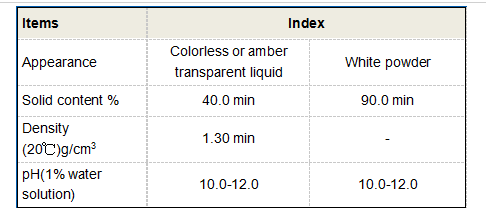Understanding Poly Aluminum Chloride and Its Applications in Industry and Water Treatment
What is Poly Aluminum Chloride?
Poly Aluminum Chloride (PAC) is a widely used water treatment chemical that's gaining recognition in both municipal and industrial sectors. As a coagulant, PAC plays a crucial role in treating drinking water, wastewater, and industrial effluents. Its unique chemical properties allow it to effectively clarify water by removing suspended particles, colloids, and other impurities. In this article, we will explore the composition, production, uses, advantages, and environmental considerations of PAC.
Composition and Characteristics
PAC is a type of aluminum-based coagulant which is composed of a polymeric form of aluminum chloride. More specifically, it is formed by the hydrolysis of aluminum chloride in water, resulting in a product that contains various aluminum species, including monomeric and polymeric forms. This polymerization is what sets PAC apart from traditional coagulants such as aluminum sulfate (alum).
PAC is often produced in three different forms solid, liquid, and powder. The solid form is typically supplied as a white powder, whereas the liquid form appears as a pale yellow solution. The chemical formula can vary depending on the specific type of PAC and its degree of polymerization, but it generally has the formula Aln(OH)mCl(3n-m), where 'n' and 'm' represent the degree of polymerization and the hydrolysis, respectively.
Production Process
The production of PAC involves neutralizing aluminum hydroxide with hydrochloric acid. The reaction forms a soluble form of aluminum salt, which can then undergo polymerization. The PAC product is typically adjusted to a specific degree of basicity to enhance its coagulation properties. This is crucial because the basicity level affects how well PAC aggregates particles during water treatment processes.
Applications
PAC is utilized in various applications primarily in water treatment processes. Its effectiveness as a coagulant makes it suitable for
1. Drinking Water Treatment PAC is used to remove turbidity and pathogens from drinking water, ensuring safe and clean potable water for consumers.
2. Wastewater Treatment In municipal and industrial wastewater treatment plants, PAC is used to facilitate the removal of suspended solids, organic matter, and heavy metals, thereby improving effluent quality.
3. Paper and Pulp Processing The paper industry employs PAC to enhance the retention of fibers and fillers during production, leading to better quality paper products.
what is poly aluminum chloride

5. Cosmetics and Personal Care PAC is sometimes included in personal care products for its thickening and binding properties.
Advantages of PAC
The advantages of using PAC over conventional coagulants such as alum are numerous
1. Higher Efficiency PAC can effectively reduce turbidity with lower dosages compared to alum, which translates into cost savings.
2. Broader pH Range PAC functions effectively over a wider range of pH levels, making it versatile for different water sources.
3. Less Sludge Production PAC generates less sludge during the coagulation process, resulting in reduced expenditures for sludge handling and disposal.
4. Improved Settling Rates The flocs formed by PAC are denser and settle more quickly, which can enhance the efficiency of solid-liquid separation processes in water treatment facilities.
5. Residual Alkalinity PAC provides residual alkalinity which can help in maintaining optimal pH levels in treated water.
Environmental Considerations
While PAC is generally considered to be environmentally friendly, like any chemical, its application must be managed correctly. Overdosage can lead to aluminum residuals in water, which could present health concerns. Therefore, monitoring and controlling the dosage of PAC during treatment processes are essential to minimize potential risks.
In summary, Poly Aluminum Chloride is an effective coagulant used in various water treatment applications due to its superior performance, cost-effectiveness, and environmental benefits. Its role in ensuring safe drinking water and treating wastewater cannot be understated, making it an invaluable resource in modern water management practices. As industries continue to seek efficient and sustainable solutions, PAC is likely to remain a significant player in the realm of chemical water treatment.
-
lk-319-special-scale-and-corrosion-inhibitor-for-steel-plants-advanced-solutions-for-industrial-water-systemsNewsAug.22,2025
-
flocculant-water-treatment-essential-chemical-solutions-for-purification-processesNewsAug.22,2025
-
isothiazolinones-versatile-microbial-control-agents-for-industrial-and-consumer-applicationsNewsAug.22,2025
-
scale-inhibitor-key-solutions-for-water-system-scale-preventionNewsAug.22,2025
-
organophosphonates-versatile-scale-inhibitors-for-industrial-water-systemsNewsAug.22,2025
-
scale-and-corrosion-inhibitor-essential-chemical-solutions-for-water-system-maintenanceNewsAug.22,2025





